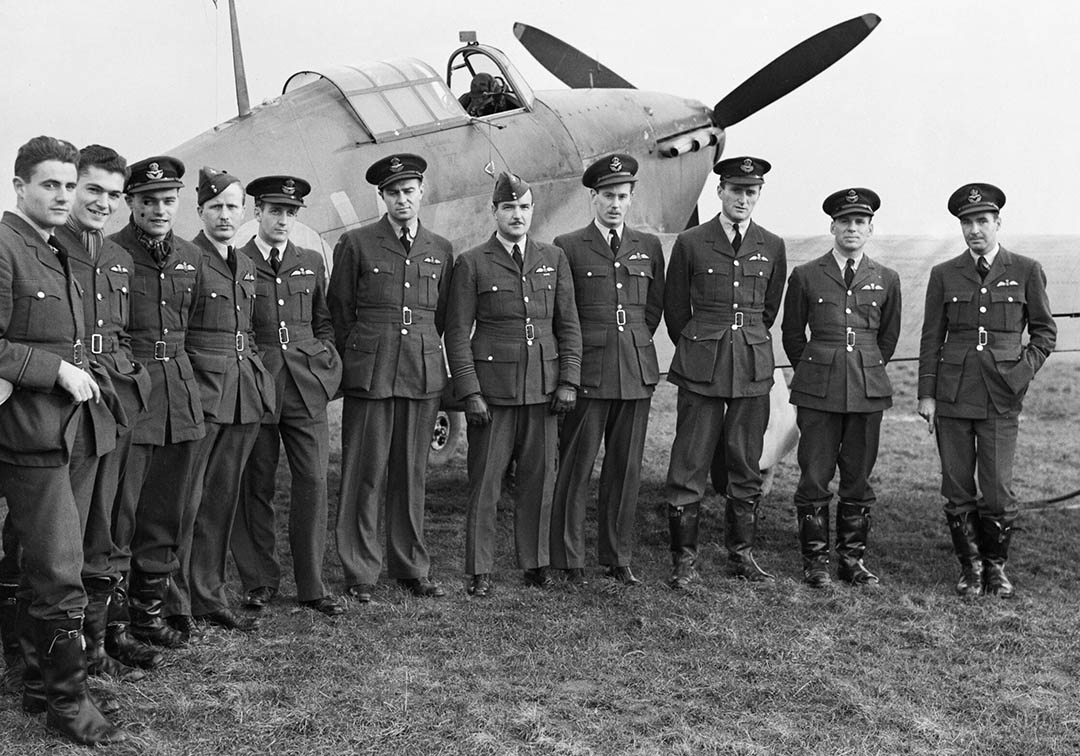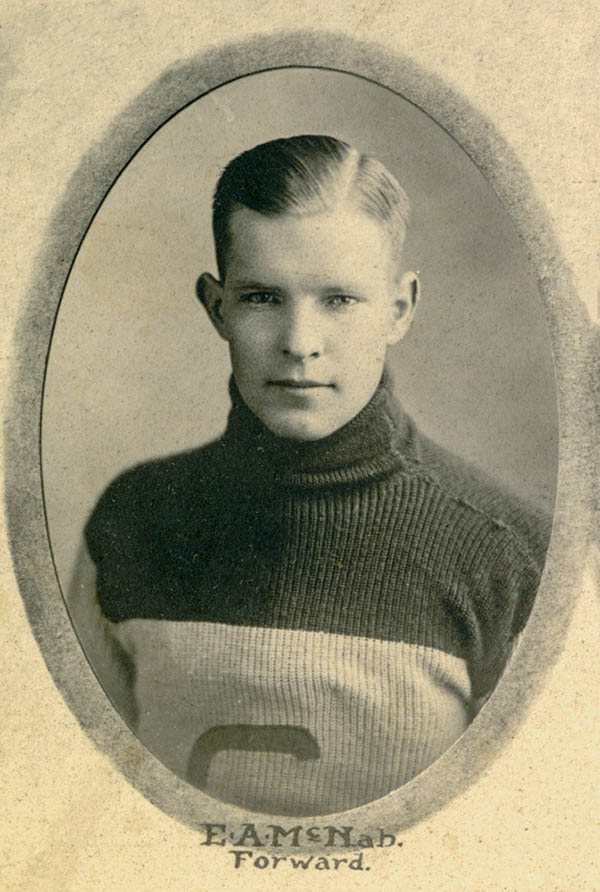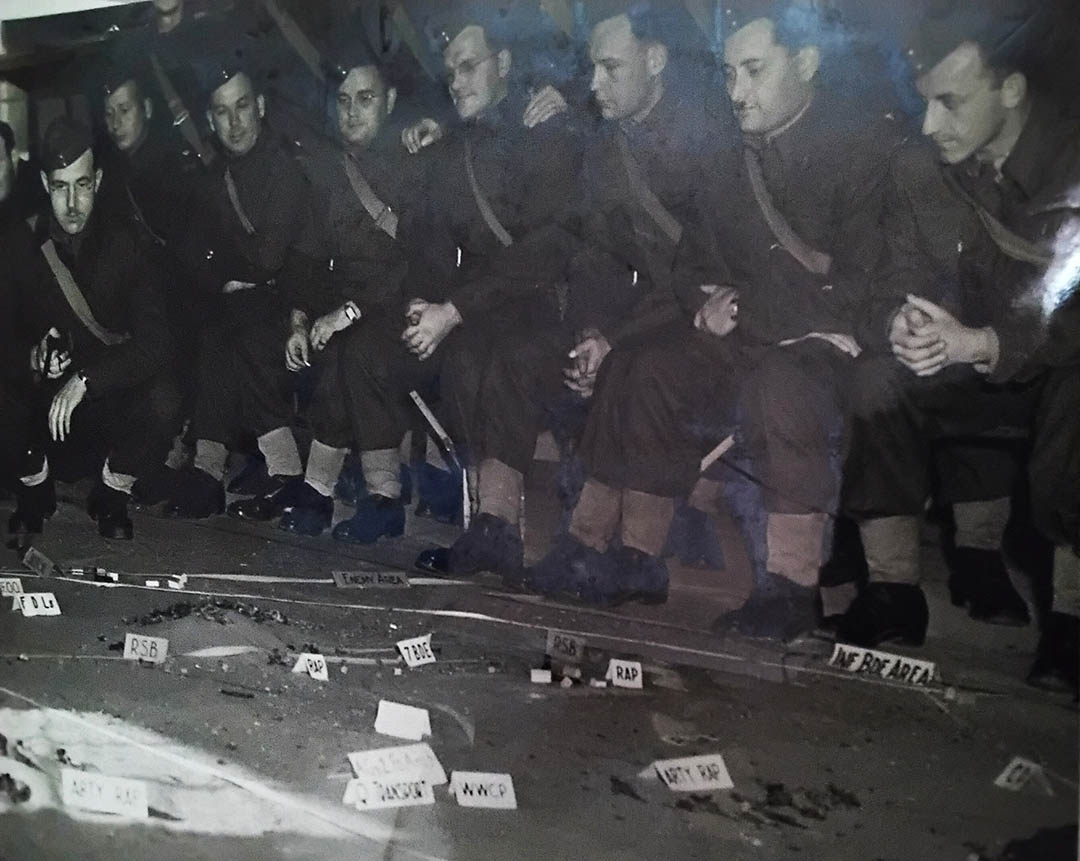
USask remembers: The service of the McNab brothers
From the Prairies to Passchendaele, from the Land of Living Skies to the skies over London in the Battle of Britain, the McNab brothers from the University of Saskatchewan (USask) answered their country’s call in both world wars.
By James ShewagaAll four of the sons of Edith and Archibald McNab – the former Lieutenant-Governor of Saskatchewan who played a key role in lobbying for Saskatoon to be chosen as the site of the University of Saskatchewan – served overseas, with three of the four brothers attending USask before going off to war. Former USask student Spencer McNab and his brother Edgar both enlisted at the age of 20 and faced the horrors of trench warfare in the First World War while taking part in the historic battles of Vimy Ridge and Passchendaele in 1917.

“My dad was a hero because of what he did, and I used to read out his letters – that he literally wrote from the trenches – every Remembrance Day,” said Spencer’s son Peter McNab, who earned an education degree at USask in 1960 and went on to a long career teaching in Canada and overseas. “My dad’s service in World War I, he was always very quiet about it, and he did not belong to the Legion, for example. I remember once I asked him ‘What was the biggest thing for you in the war?’ And his eyes sort of filled with tears and he said, ‘It was the Vimy thing.’ The war was never really discussed a lot in my family, but I think there is a quiet pride in what they all did.”

Both brothers survived the war, although Edgar later struggled with symptoms of shellshock, while Spencer suffered a shrapnel wound to the leg while serving with the Western Universities 196th Battalion in the Battle of Passchendaele.
“In one of my dad’s letters, he described going over the top of the trench facing machine gun fire and they found their way to a farm house and ran into some German soldiers and captured a couple … and when my dad was leading those prisoners back was when my dad got wounded in the leg,” Peter said. “They started searching the soldiers and my dad took a pistol from one of the Germans and the pistol was stamped ‘Property of U.S. Army, 1911.’ So the German had taken it from an American soldier, and my dad took it from him, and I still have that pistol today.”
The two younger McNab brothers – John and Ernest – later followed their senior siblings into service during the Second World War, after earning degrees at USask in the 1930s.
Dr. John Allan (Jack) McNab (MD) studied science and medicine at USask – graduating with a science degree and medical certificate in 1932. After completing his medical training, Jack volunteered in 1942 to go overseas and serve as a major with the Royal Canadian Army Medical Corps. He landed in Normandy and treated wounded soldiers throughout Europe during the war, from England to France to Belgium.
“My dad seldom talked about his war service,” said his daughter Jean McLaren. “My dad was a very kind man who had decided as a child that he wanted to become a doctor so he could help people. The things he must have seen in the hospitals, especially in Europe, must have horrified him and I’m sure he never wished to revisit some of those memories.”

While he largely worked behind the lines, the field hospitals in which medical personnel served were not immune from shelling, as the front often shifted dramatically during major engagements, surprise attacks, and in the fog of war.
“Even though he served as a doctor and didn’t actively fight, my mother said she worried when he was in Europe because hospitals were close to the front lines and were sometimes hit,” McLaren said. “My major feeling about his service then was gratitude that he had returned safely.”
While Jack McNab took care of the wounded on the ground, Ernest (Ernie) McNab took to the skies to become the most decorated of the McNab family of war heroes. Serving as the commanding officer of the Royal Canadian Air Force’s (RCAF) first fighter squadron overseas, he became the first RCAF pilot to shoot down an enemy aircraft on Aug. 15, 1940, during the Battle of Britain. On his first flight leading young Canadian pilots on a training mission, McNab shot down a German Dornier bomber and became the first RCAF fighter pilot to be awarded the Distinguished Flying Cross – presented personally by King George VI on Oct. 22, 1940.
One of the deadliest battles of the war, 23 of the 117 Canadian pilots who took part in the three-month Battle of Britain were killed – including four from Saskatchewan and 1,542 other Allied pilots. McNab was officially credited with shooting down four enemy aircraft himself, and sharing another, along with one probable shoot-down and damaging three other enemy aircraft.
As with all of his brothers, McNab didn’t share a lot about his war experiences in later life.
“Like most men of his generation, he didn’t talk about the emotional impact of the war, except in stories, usually with an amusing cover,” said his son, Dr. Gordon McNab (PhD). “However, he did make it clear that most of the time was spent being bored with paperwork, interrupted with moments of sphincter-clenching terror.”
After leading his young squadron in the skies over England in the early days of the Second World War, McNab was promoted to wing commander in 1941 and then the rank of group captain and re-assigned back to Canada to train younger pilots.
“He was older than most of the fighter pilots, especially in his own squadron, so his combat time was short – 1940 and a bit of 1941 – and then he moved on to commanding air stations and occasional trips home to help with training and other important tasks,” his son Gordon said. “He was in Canada when Pearl Harbor occurred (Dec. 7, 1941) and he was sent down to the West Coast to give the U.S. Army Air Corps some of his experience of fighter tactics and operational methods.”

McNab returned overseas in 1942 and took command of Digby Air Base in England, serving until the end of the war in 1945. He was later made an Officer of the Order of the British Empire and awarded the Czechoslovak War Cross, although it wasn’t until years later that his son, nephews and nieces learned the full story of his remarkable service.
“Yes, we were proud of him and his accomplishments,” said Gordon. “Yet, as a youth, it was just part of his background. Just history.”
After surviving the war, McNab went on to serve two more decades in the Royal Canadian Air Force as a senior air staff officer at Western Command until 1957.
Born in in Rosthern, Sask., McNab attended Nutana Collegiate in Saskatoon before enrolling at USask and earning his engineering degree in 1931, while on leave after enlisting in the RCAF in 1926. McNab played five years with the Huskie football and hockey teams, and was a member of the Huskies squad that advanced to the Allan Cup Canadian Senior Hockey Championship in Winnipeg. He was posthumously inducted into the Huskie Athletics Hall of Fame in 1987, 10 years after he passed away in Vancouver in 1977 at the age of 83.
Remembrance Day ceremony at USask
For close to a century, the University of Saskatchewan (USask) has held a Remembrance Day ceremony each year at the Memorial Gates on campus. This year’s 97th annual program and wreath-laying ceremony will be held at 1:30 pm on Tuesday, Nov. 11 at the Memorial Gates.

